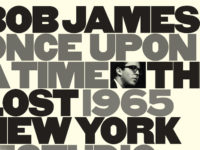Like the proverbial fine wine, James Moody only gets mellower and better with age. A seasoned saxophone and flute veteran who was in Dizzy Gillespie’s original big band of the later 1940’s and most famously the author of everyone’s favorite vocalese jazz tune “Moody’s Mood For Love,” (with the lyrics later added by Eddie Jefferson), Moody is one of the flame keepers of old school jazz. It’s a flame he has been actively keeping alive even today as he celebrated his 85th birthday just this past March.
Recently, Moody brought Todd Coolman (bass), Lewis Nash (drums) and another giant in Kenny Barron (piano) into the studio and knocked out a collection of mostly standards and a few originals over the course of a few days. The first day of those sessions became the material used for the 4A CD that was released last year. This August 25 heralds the arrival of more recordings from those sessions, logically called 4B.
Moody sticks with his favored tenor saxophone for all of these songs, and it’s a tenor that doesn’t beg for a change up in woodwinds. Some sax players “sound like” someone else, but in the case of someone whose style crystallized over sixty years ago, it’s a case where everyone else sounds like Moody. Or at least those who play with a preference of having the right notes and the right tone over raining down sheets of sound. But a fair reference point for those who require it would be Moody’s contemporary Dexter Gordon.
The song selection for 4B consist of seven standards and a couple of originals, one a piece by Barron and Coolman. The opening bars of Billy Strayhorn’s “Take The A Train” is played nice and slow by Barron before Moody makes his entrance at the normal, quicker pace. From this first track he serves notice that he will play only up to the limits of the tempo and melody and no further. The rest of the covers don’t add many twists to the standard small combo arrangements, but with Moody’s playing precise and sweet, with exemplary comping by Barron and flawless execution by the rhythm section. these arrangements are the model for how these songs should be played in a straight jazz small group setting. Most of the tunes groove along at a just-right mid-tempo gait, and Moody takes the first and longest solos, usually followed by Barron with Coolman and Nash taking occasional solos themselves. With the consistent performances in every song, few stand out from the others, but I do like Moody’s solos on “Hot House” and “Along Came Betty” a little better than the others.
When ballads are tackled, Moody remains the same player, since he never plays too hot in the first place. As with another ballad, “Speak Low”,”I Love You” uses a light, Brazilian rhythm. His performance here is nostalgic and pouring in just the right emotion into the song without getting too sappy, a trait that Barron follows in his own solo, too. Coolman’s “O.P. Update” isn’t an old tune from the classic era of standards, but you could have fooled me. Nash’s brushwork on this song is a highlight. Barron’s sentimental “Nikara’s Song” is the only song in the program that has a dark mood, and in contrast to the more straightforward melodies throughout the rest of the album, it’s got the quiet sophistication typical of its composer.
All the territory tread on 4B is territory James Moody has traversed many times for more than six decades. But with the vast experience of him and his backing band, the execution couldn’t be any better. Not a ground-breaking or standout record, but a very tastefully performed one. Moreover, we need guys like Moody and Barron to keep setting the bar to inspire the younger generations. Keeping the flame lit might be a tough job to do as well as these cats, but very easy (and enjoyable) to witness.
- Claudio Scolari Project – ‘Opera 8’ (2024) - April 25, 2024
- Nick Millevoi – ‘Moon Pulses’ (2024) - April 23, 2024
- Cannonball Adderley – ‘Poppin’ in Paris: Live at L’Olympia 1972′ (2024) - April 20, 2024





